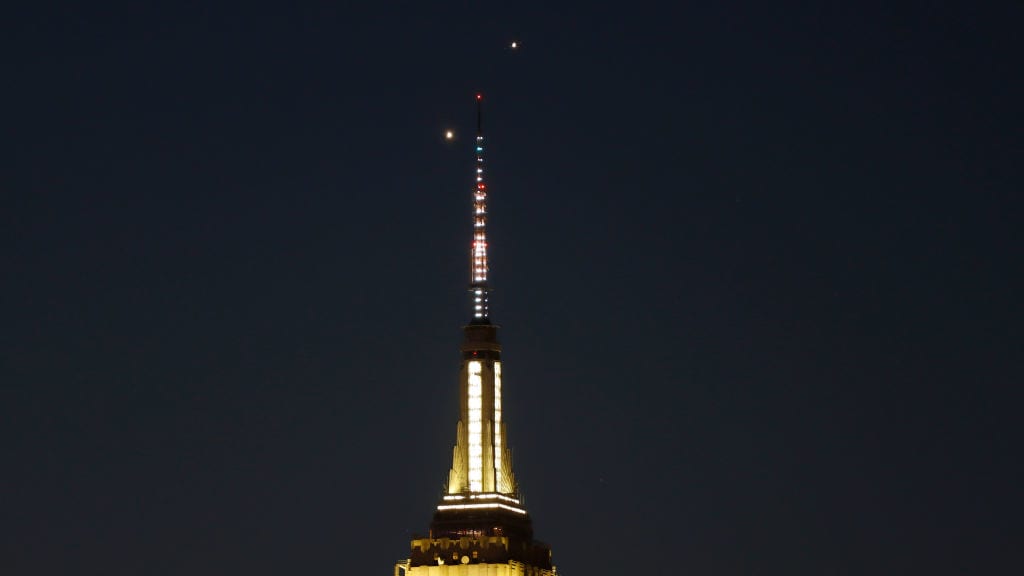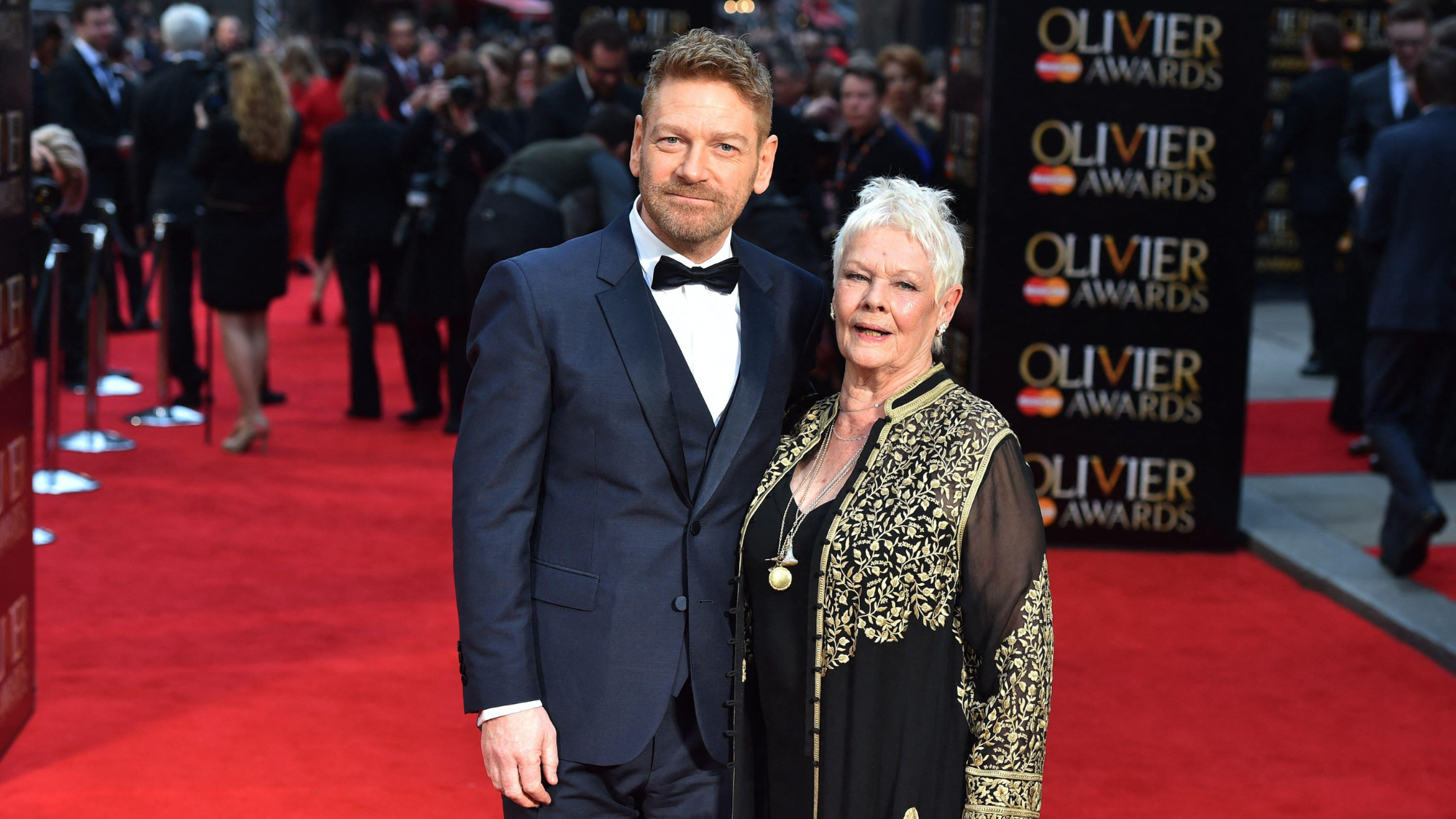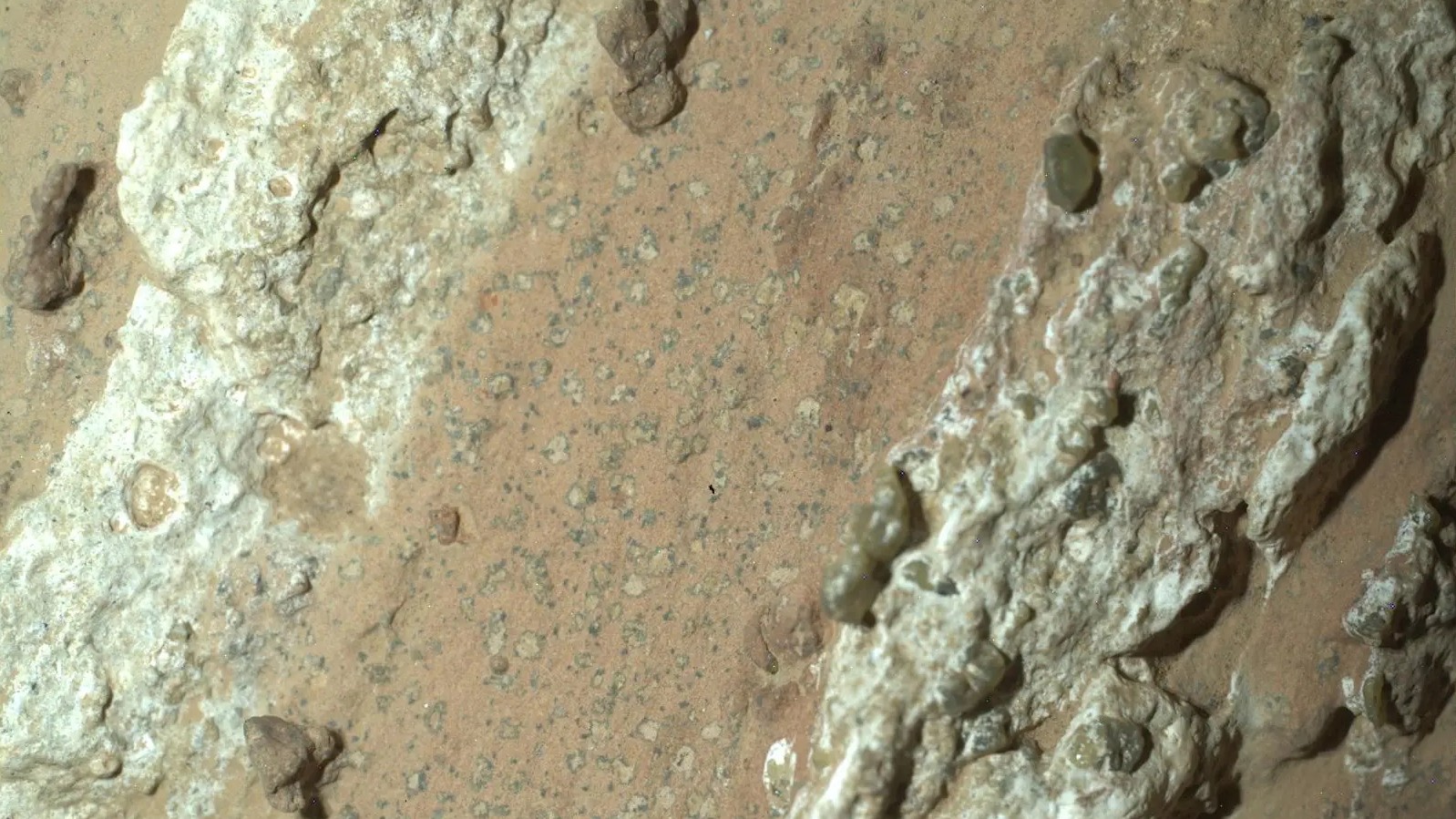Jupiter and Venus to 'kiss' in the night sky Wednesday evening


Jupiter and Venus have been getting closer to each other in the night sky and will meet on Wednesday evening before moving apart again. "It is an apparent close approach from our perspective, as the planets are in fact hundreds of millions of kilometers apart," said Paul Delaney, professor emeritus at the York University Department of Physics and Astronomy.
Venus, often called the "morning star" or "evening star" depending on its spot in the sky, is the brighter of the two planets. Jupiter, the solar system's largest planet, will be located slightly above it to the left. The planetary "kiss" occurs approximately once a year, according to CBC News.
"Venus and Jupiter are somewhat common conjunctions, occurring about once a year, but if you have clear skies it should still be a very fun object to view," remarked Elaina Hyde, director of York University's Allan I Carswell Observatory. "At magnitude –2.1 and –4, the planets Venus and Jupiter are two of our brightest objects to see in the night sky."
The Week
Escape your echo chamber. Get the facts behind the news, plus analysis from multiple perspectives.

Sign up for The Week's Free Newsletters
From our morning news briefing to a weekly Good News Newsletter, get the best of The Week delivered directly to your inbox.
From our morning news briefing to a weekly Good News Newsletter, get the best of The Week delivered directly to your inbox.
In addition to the planets crossing paths, some may also be able to see three of Jupiter's brightest moons: Io, Ganymede, and Callisto. Scientists recommend using binoculars to get the best view.
"Any time the brightest planets, as seen from Earth, 'get together,' it is worth the look," said Delaney. "I never tire of watching their dance with respect to the background stars."
A free daily email with the biggest news stories of the day – and the best features from TheWeek.com
Devika Rao has worked as a staff writer at The Week since 2022, covering science, the environment, climate and business. She previously worked as a policy associate for a nonprofit organization advocating for environmental action from a business perspective.
-
 Is there a Christmas truce in the Starmer farmer ding-dong?
Is there a Christmas truce in the Starmer farmer ding-dong?Today’s Big Question There’s an ‘early present’ for farmers but tensions between Labour and rural communities remain
-
 The history of US nuclear weapons on UK soil
The history of US nuclear weapons on UK soilThe Explainer Arrangement has led to protests and dangerous mishaps
-
 Tea with Judi Dench: ‘touching’ show is must-watch Christmas TV
Tea with Judi Dench: ‘touching’ show is must-watch Christmas TVThe Week Recommends The national treasure sits down with Kenneth Branagh at her country home for a heartwarming ‘natter’
-
 Blue Origin launches Mars probes in NASA debut
Blue Origin launches Mars probes in NASA debutSpeed Read The New Glenn rocket is carrying small twin spacecraft toward Mars as part of NASA’s Escapade mission
-
 ‘The Big Crunch’: why science is divided over the future of the universe
‘The Big Crunch’: why science is divided over the future of the universeThe Explainer New study upends the prevailing theory about dark matter and says it is weakening
-
 Dinosaurs were thriving before asteroid, study finds
Dinosaurs were thriving before asteroid, study findsSpeed Read The dinosaurs would not have gone extinct if not for the asteroid
-
 The moon is rusting
The moon is rustingUnder the radar The Earth is likely to blame
-
 Panspermia: the theory that life was sent to Earth by aliens
Panspermia: the theory that life was sent to Earth by aliensUnder The Radar New findings have resurfaced an old, controversial idea
-
 Africa could become the next frontier for space programs
Africa could become the next frontier for space programsThe Explainer China and the US are both working on space applications for Africa
-
 NASA reveals ‘clearest sign of life’ on Mars yet
NASA reveals ‘clearest sign of life’ on Mars yetSpeed Read The evidence came in the form of a rock sample collected on the planet
-
 SpaceX breaks Starship losing streak in 10th test
SpaceX breaks Starship losing streak in 10th testspeed read The Starship rocket's test flight was largely successful, deploying eight dummy satellites during its hour in space
